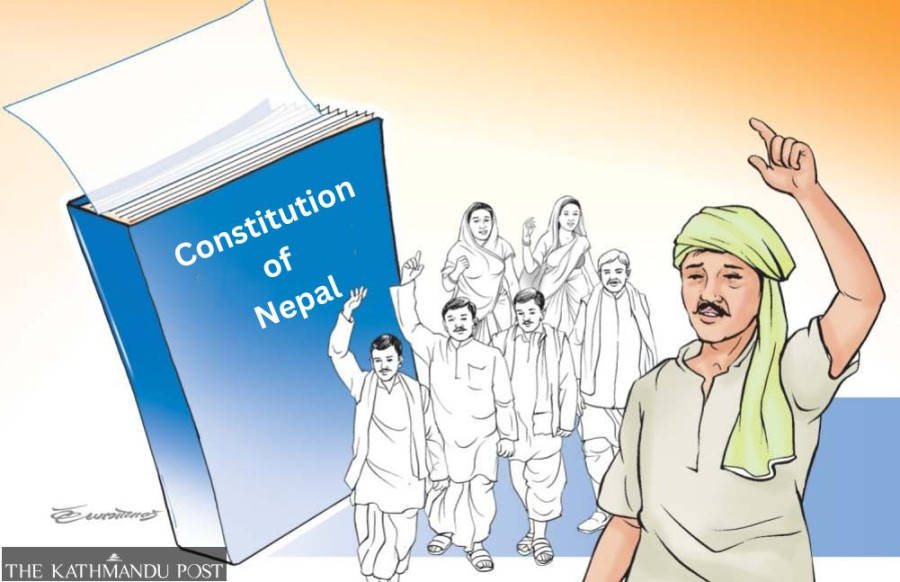Editorial
Gone astray
Madheshis are not impressed by the dual nature of the local political parties.
Nepal is marking the ninth Constitution Day on Thursday. While the government is preparing to celebrate with special functions, a few Madhesh-based parties want to mark it as a Black Day. The Loktantrik Samajbadi Party is one of the disgruntled groups that has announced a protest on the occasion. But the Janamat Party, a new force that is leading the provincial government in Madhesh, has decided to celebrate the day.
A document of compromise, multiple forces, including the Madhesh-based parties, have grievances over the present constitution. The CPN (Maoist Centre) registered its dissenting views on various issues at the time of drafting the constitution, including on the form of government. They stood for a directly elected presidential system and agreed to a compromise deal with other parties. The Rastriya Prajatantra Party, which lobbies for a Hindu kingdom, was against the secular republican system. The pro-monarchy party has frequently launched agitations demanding the same. A fringe Rastriya Janamorcha party has stood against federalism right from the start. Various other parties and groups oppose one or the other constitutional provision. But they haven’t taken an extreme decision to mark the day of its promulgation as a black day.
It’s universally accepted that no constitution is perfect and a statute cannot satisfy all sections of the society. It is hence said that a constitution is a living document that can be amended and updated based on people’s aspirations and the changed reality. Nepal’s constitution and political forces of the country have accepted these facts. The major political forces at the time of unveiling the constitution in 2015 promised the disgruntled groups that they would address some of their ‘genuine concerns’ through amendments. They have a moral responsibility to keep their word.
After its promulgation, the statute has been amended multiple times. Going against the usual parliamentary practice of one of the two largest parties forming the government and the other leading the opposition bloc in the House, Nepal’s two largest forces—the Nepali Congress and the CPN-UML—are now together in government. The given rationale for their coming together is to amend the constitution and ensure political stability. Again, it is incumbent upon them to do so based on broadest possible consultations.
Registering differences, pressing the establishment to get their demands addressed and peacefully fighting for the cause they believe is a democratic right of each and every Nepali. But the manner of the protest matters. The parties and the leaders that have joined governments and governed the country multiple times, both before and after the promulgation of the constitution, should present themselves in a more mature way. It smacks of hypocrisy when they say and do one thing when in the government and the complete opposite when out of power.
More importantly, people should be convinced the agendas and demands of political forces are genuine. It is unfortunate that over the past decade, people have come to believe that the Madhesh-based parties are more than willing to trade their agenda for Cabinet seats. Their image has taken a nosedive, as is reflected in recent election results. The role of strong regional forces is important in the federal system we have adopted. However, the country’s regional parties are getting weaker due to divisions. A few months after a group led by Ashok Rai split the Upendra Yadav-led Janata Samajbadi Party-Nepal, a former Loktantrik Samajbadi Party leader Rajendra Mahato announced another new outfit on Tuesday. Madheshis are not impressed. They have some valid demands but they need credible political outfits to champion them.




 11.12°C Kathmandu
11.12°C Kathmandu














